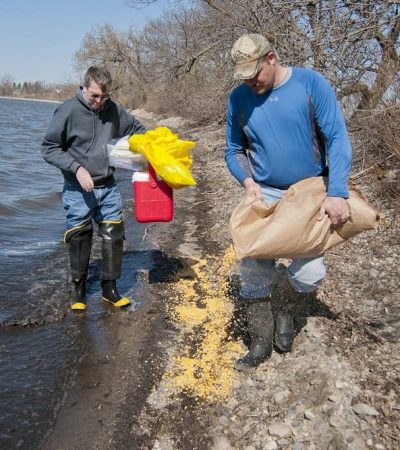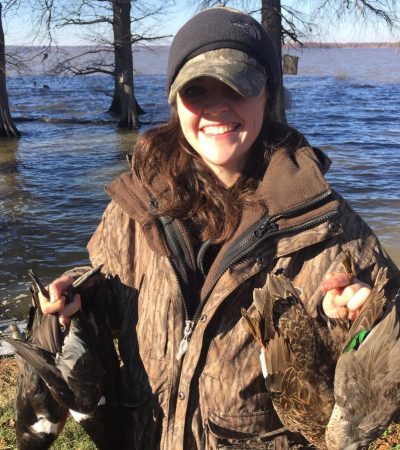We have some pits in the middle of some bean fields and we usually leave some beans around the pit for concealment and food. We are planning on planting corn around the pits (in the bean field) for better concealment and more food. We have a 2 row planter to plant these small strips of corn. What’s the best strategy to go about planting this? Do laps around the pit to make a circle of corn or would you do long strips to make the pit blend in better? Maybe I’m over thinking it. Anybody else do this? -JMH600-
Blind is in center of circle
The slash is so ducks won’t land behind the blind regardless of wind direction.
Place decoys on outside of circle to simulate real conditions. I try to maximize my opportunities at home, too. ‘Don’t know if what you propose is worth the trouble. Maybe someone else will share their first-hand experience with you.
I guess what you do depends on how it affects the farmer’s interests…..i.e. planting, applications and harvest. I would think ‘strips’ would be easiest to work around.
I’ve seen standing corn become ‘roost’ material – they leave during the day and feed on it after dark. So food value is probably useless for attracting something during legal hours.
For cover I would think planting around the blind would just call more attention to something ‘un-natural’ or in this case, ‘un-mechanized’. It’ll get tromped down during the season with dog and foot traffic.
So, my opinion would be to forget about corn for cover and food unless your pits are close enough to benefit from planting strips in the whole 1/4 sections (like 4 combine passes apart) – again, depending on how it affects farmer’s practices. -Anatidae-
I would recommend seeing what you can and can’t do if its not your property as was already mentioned. No use for you to bust your tail on something that’s going to be destroyed/sprayed down the road.
I have tried to plant reeds and similar plants that are present on nearby ditch banks to go for the “natural habitat” angle. Establishing aggressive stuff like reeds and cane maybe be unfavorable for the ag side of things and may be out of the question. One simple solution that can have excellent results is to do nothing at all. My pit had about a 30′ boarder around it that was not planted in beans. I told my men to stay out of it and don’t spray it. It grew up with weeds and looked like a normally overgrown wet spot. We designated one side of the pit as the entrance/exit so as to not trample everything down. We pulled vines and weeds off the ditch bank to stuff the flaps with and the ducks never gave us much attention. You couldn’t make out the pit if you were standing in front of it.
BTW I have never hunted in Canada. I still spend more time than I’d like to admit on a 5g bucket hiding from ducks. -Northbigmuddy-
A leafy cane can be used in the pit top as a good base. It will turn brown within a week or so. Add on top of it indigenous vegetation in the area of your pit. The cane provides good attachment points for this vegetation, and it holds up throughout the season. Refresh the indigenous vegetation as needed.
Subtle camo that blends in well and provides adequate cover from lots of eyes from above is the goal.
Also, Mossy Oak makes a seed blend for growing cover vegetation at your pit site. I am going to try this for the upcoming season. Gonna sow the seed next to the blind and on all areas of the levee and other high ground nearby that is not farmed. -Po Monkey Lounger-
Join Our Ducksouth Group on Facebook
Listen to The On The X Podcast






